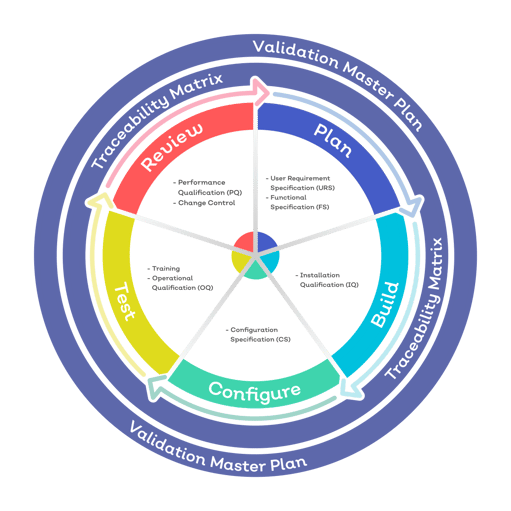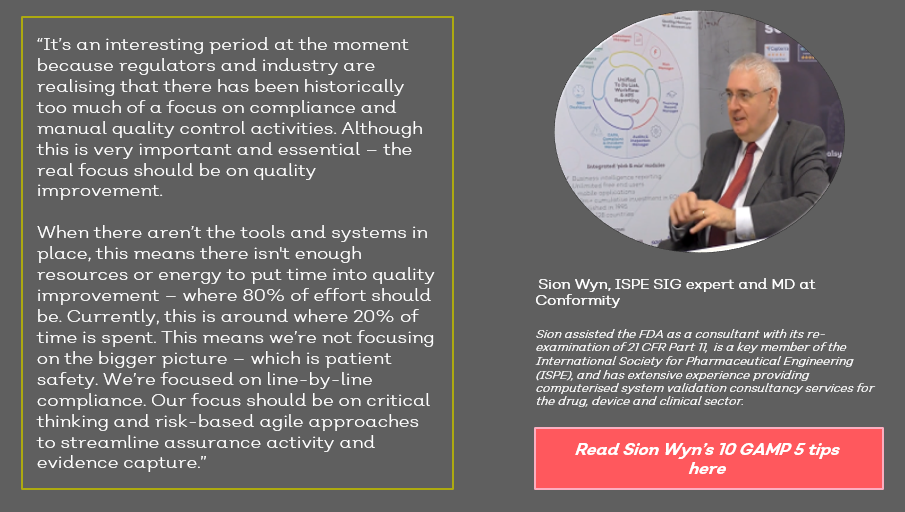Want to contribute to this article?
GxP. Good something practice.
As a phrase, it's completely vague and tells businesses nothing about how they should be meeting quality guidelines and regulations.
Its 'x' can stand for an 'L' for laboratory, an 'A' for agricultural, a 'T' for tissue, a 'D' for distribution, and so on.
As such a broad, overarching label applicable to a string of industries, it's worth getting to the core of what GxP actually means.
What should a 'good' business be doing, regardless of their 'x' specifics?
Which 'practices' should you even be looking at?
Find out with our GxP compliance checklist.

Getting to square 1
The specific quality regulations affecting a laboratory will be very different from those of a clinic, farm or manufacturer.
But almost any organisation can work to the generic requirements of GxP, no matter what industry they're in.
Ultimately, GxP's purpose is to allow businesses to guarantee the integrity, safety and quality of the products and services they provide to their customers, through traceable, accountable policies, processes and procedures.
Can you completely trace the development history of the products your customers receive from you?
And can you effectively resolve who in your organisation contributed to their development, and how, from start to finish?
This is the 'square 1' of GxP, around which GDP, GMP, GFP and so on are built.
GxP checklist
Use this GxP audit checklist to gauge your business's ability to meet the core and generic requirements of GxP.
If you can answer 'yes' to each question, your business has a firm GxP base with which you can tackle your industry-specific 'x' requirements.
Complete the form below to download the checklist:
Documentation
Obviously, the core GxP requirements of traceability and accountability require a functional document management system.
Here are the key documentation questions to ask yourself when driving a GxP operation:
-
Do we have an existing documentation control system?
-
Is there a dedicated physical or electronic repository for the storage of live and archived documents?
-
Does that repository have controlled access?
-
Is the document repository maintained, monitored and under control by dedicated personnel?
-
Are all changes to documents audit-trailed, with superseded versions replaced and stored?
-
Is there a Standard Operating Procedure for the storage, review, retention, and archiving of documents?
-
Do we have a policy / process for guaranteeing the security of all business data and documentation?
-
Is there an electronic archive / back-up system for business documentation?

Download our whitepaper: 'The Case For Document Management'
Equipment
Since GxP primarily concerns itself with the integrity of products reaching your customers, the equipment used to produce, store and/or move those products is particularly significant for GxP operation.
-
Do we have a documented process for validating and qualifying the equipment our organisation uses?
-
Do we have a central equipment and asset inventory, including instruction and operation manuals?
-
Do we have established, agreed and standardised tolerance limits for equipment and asset health?
-
Is there a method for continually monitoring health?
-
Do we have a documented process for replacing equipment or assets whose health falls outside the agreed tolerance limits?
-
Are there documented and visible calibration and maintenance schedules?
-
Does each maintenance and calibration event have an accompanying log capturing the time and date, relevant personnel?
-
Are the records or equipment and assets, calibration and maintenance, securely stored and traceable?

Read our '7 questions to ask when managing business equipment'
Processes & procedures
'Practice' ultimately boils down to the processes and procedures within your business.
Standardised, visible, documented processes that your team understand how to follow are key for GxP.
-
Do we have a central listing of all live Standard Operating Procedures (SOPs)?
-
Are SOPs available in their relevant business locations?
-
Do we have an overarching SOP governing how other SOPs are drafted, revised, distributed, controlled and archived?
-
Is there an SOP review schedule to ensure SOPs remain up-to-date, compliant and fit for purpose?
-
Is there a change control system should amendments have to be made?
-
Are deviations from standard procedures fully documented?
-
Are corrective and preventative actions (CAPAs) fully documented alongside their relevant SOPs?
Learn how to align and control your policies and processes electronically
People
As the old cliché goes, the most important part of an organisation.
(And of GxP compliance!)
-
Are all staff properly trained to perform the functions and activities of their roles? Is training associated with the relevant SOP(s) for that employee?
-
Does each employee have an associated record of their training, preferably directly accessible by that employee?
-
Does each employee have a documented training matrix and plan, preferably directly accessible by that employee?
-
Do we assess and document the competency of employees on a regular basis?
-
Do we have an accurate organisational chart?
-
Do we have a quality function/department within the business?
-
Can employees quickly and easily raise issues, incidents, concerns and near misses to the quality department, should they wish to do so?
-
Are our consultants, contractors, suppliers, vendors and other third parties properly certified, trained and approved for that function?

Learn how Laura Cox, Lead Responsible Person at CST Pharma, applied an electronic training management system for Good Distribution Practice compliance
Environment, health and safety
Guaranteeing a safe, efficient working space with good EHS control is the next component of GxP.
-
Is our office, warehouse, manufacturing site and general working facility clean and properly maintained?
-
Do we have operational environmental controls, and are they regularly audited?
-
Do all our staff have access to the correct safety equipment and PPE required for their role?
-
Do we have documented cleaning, sanitation and waste disposal SOPs?
-
Do we have a properly maintained space for documents, equipment and assets?

Read how Sodexo applied EQMS to slice their GxP-compliant laboratory cleaning time by 67%
Information security and validation
Every modern business operates electronically to some extent - so GxP extends into the digital space too.
-
Are our computer systems password-protected with individual user log-ins?
-
Do we have a live and visible information security policy?
-
Are our computer systems regularly backed up to prevent loss of data?
-
Do we have a continuity plan in place for IT disruption?
-
Are all computer system changes, maintenance actions, errors and repairs recorded?
-
If we use software to automate and manage our operation – has that software been fully validated for use?

Read more about GxP quality management software validation

Next steps
Access our case study booklet to learn how we helped a range of companies embed GxP compliance across their operations:










Share your thoughts on this article